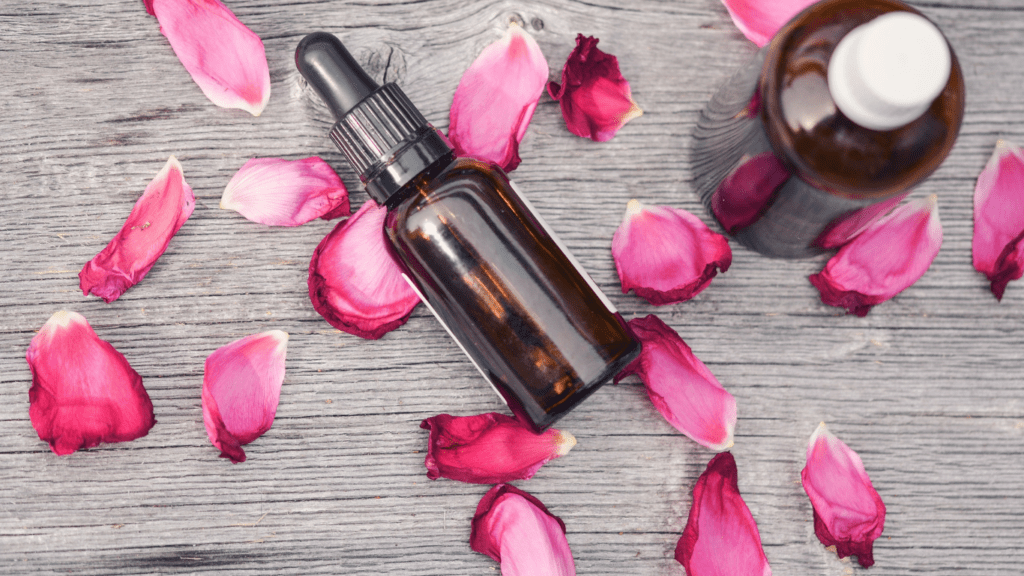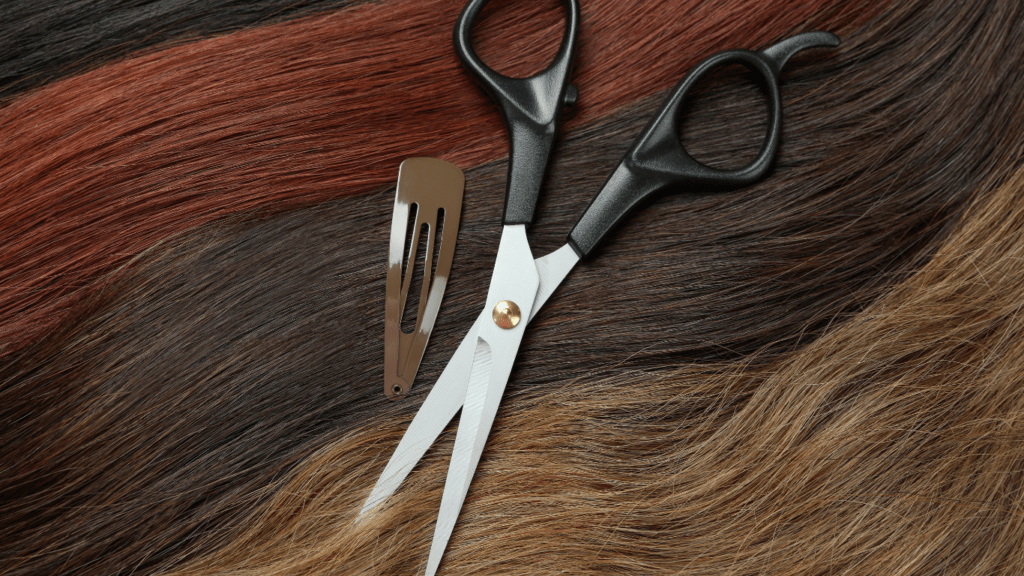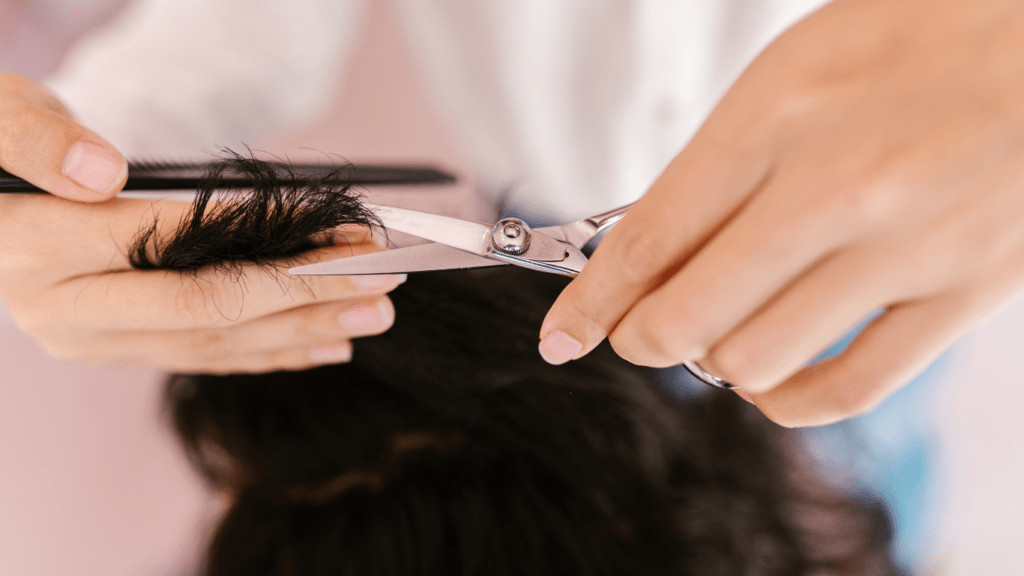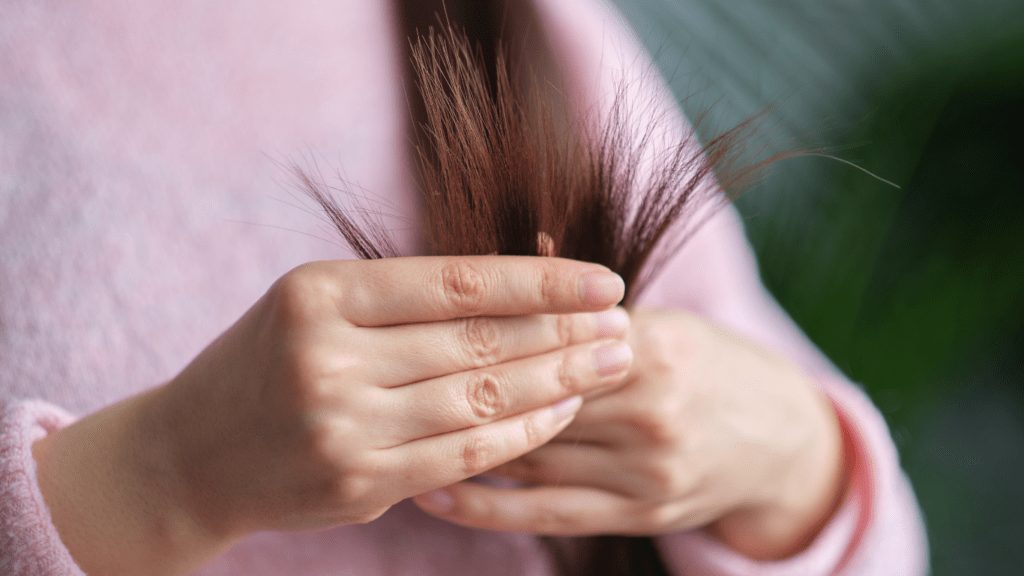Understanding Frizz: Causes and Types
Frizz results when hair lacks moisture. Dry conditions, humidity, and damaged hair cuticles lead to this issue. To address frizz effectively, knowing its root causes is crucial.
Causes of Frizz
- Lack of Moisture: Hair dries out from over-washing and heat styling, leading to frizz.
- Humidity: In humid conditions, hair absorbs moisture from the air, causing frizz.
- Damage: Chemical treatments and heat tools weaken hair cuticles, contributing to frizz.
- Friction: Rubbing hair with rough towels or pillowcases creates frizz.
- Surface Frizz: Appears on the outer layer of hair. Common on straight hair.
- End Frizz: Seen at hair ends. Linked to split ends and dryness.
- Halo Frizz: Forms around the crown. Often caused by baby hairs and breakage.
- Pouf Ball Frizz: Whole head looks frizzy. Common in curly and wavy hair.
Understanding these causes and types is essential for finding effective solutions.
Essential Hair Care Routine

Creating an effective hair care routine is crucial to control frizz and keep your hair smooth. Let’s explore key practices to incorporate into your routine.
Proper Washing Techniques
Washing hair correctly prevents frizz. Use lukewarm water to wash out dirt and oil without stripping moisture. When applying shampoo, focus on the scalp, as this is where the buildup happens. Rinse thoroughly to prevent residue, which can lead to frizz. If possible, finish with a cold water rinse to seal the hair cuticle and enhance shine.
Importance of Conditioning
Conditioning is pivotal in maintaining smooth hair. After shampooing, apply conditioner from mid-length to ends, avoiding the scalp. This practice replenishes lost moisture and reduces frizz. Ensure you leave the conditioner in for at least 2-3 minutes before rinsing to allow it to penetrate the hair shaft. For deep conditioning, use a hair mask once a week for intense hydration.
Using a Wide-Tooth Comb
Using a wide-tooth comb helps avoid breakage and frizz. Always detangle hair when it’s wet and coated with conditioner. Start from the ends, working your way up to reduce strain on the hair. A wide-tooth comb is gentler compared to fine-tooth combs, which can tug and break hair, leading to frizz.
By incorporating these practices into your hair care routine, you can effectively manage frizz and achieve smooth, sleek hair.
Best Hair Products for Frizz Control
Choosing the right products is crucial for keeping frizz at bay and maintaining smooth hair. Here’s a guide to the best hair products for frizz control.
Shampoos and Conditioners
Selecting a shampoo and conditioner designed for frizzy hair is essential. Look for sulfate-free options as they don’t strip your hair of natural oils.
- Sulfate-Free Shampoos: Brands like SheaMoisture and OGX offer gentle cleansing without harsh chemicals.
- Moisturizing Conditioners: Products from brands like Aussie Miracle Moist and Pantene Pro-V help lock in moisture, which reduces frizz.
Leave-In Conditioners and Serums
Leave-in conditioners and serums provide extended protection against frizz throughout the day.
- Leave-In Conditioners: Try It’s a 10 Miracle Leave-In Product or Garnier Fructis Sleek & Shine Intensely Smooth Leave-In Conditioning Cream.
- Serums: Options like John Frieda Frizz Ease Extra Strength Serum and Biosilk Silk Therapy make hair smooth and shiny.
Anti-Frizz Oils and Sprays
Anti-frizz oils and sprays help tame flyaways and add extra shine to your hair.
- Oils: Argan oil from Moroccanoil Treatment and OGX Renewing Argan Oil of Morocco are great for keeping hair smooth.
- Sprays: L’Oréal Paris Elnett Satin Hairspray and Ouai Texturizing Hair Spray offer frizz control and a long-lasting hold.
These products, when used in a consistent hair care routine, can significantly reduce frizz and promote smoothness.
Tips and Tricks for Smooth Hair
To achieve smooth hair, I incorporate specific practices into my routine. These methods help control frizz and maintain hair quality.
Regular Trimming
Regular trimming keeps hair healthy and prevents split ends from causing frizz. I trim my hair every 6-8 weeks. This consistent practice reduces breakage and maintains smoothness. Even a small trim promotes healthier hair growth.
Avoiding Heat Damage
Heat styling tools can cause significant damage if not used correctly. I use heat protectant sprays to shield my hair. Reducing the frequency of blow-drying, straightening, or curling helps preserve natural moisture. When I do use heat, I set tools to the lowest effective temperature.
Nighttime Hair Care
Proper nighttime care can make a big difference in preventing frizz. I sleep on a silk pillowcase to reduce friction. Using a satin or silk hair bonnet also helps maintain smoothness. Additionally, I tie my hair in a loose braid or bun to minimize tangles and frizz overnight.
DIY Remedies for Frizz Control
Using DIY remedies helps manage frizz and keeps hair smooth with natural ingredients.
Homemade Hair Masks
Applying hair masks with natural ingredients hydrates and smooths my hair. I mix one ripe avocado with a tablespoon of honey and olive oil to create a smoothing mask. This combo rejuvenates my hair by adding moisture and shine. Another effective mask consists of two tablespoons of yogurt and one tablespoon of honey. This mask strengthens my hair, reduces frizz, and leaves a silky finish. For protein boost, I blend one egg, a cup of coconut milk, and a tablespoon of olive oil. This mask transforms my frizzy hair, making it strong and smooth.
Natural Oils and Ingredients
Using natural oils combats frizz and keeps my hair smooth and healthy. I apply a small amount of coconut oil to seal moisture and prevent frizz. To smooth flyaways, I use argan oil, which absorbs quickly without leaving a greasy residue. Jojoba oil mimics my scalp’s natural oils, balancing moisture levels and reducing frizz. For a soothing effect, I apply a few drops of lavender oil mixed with a carrier oil like almond or jojoba. Aloe vera gel, when applied to damp hair, acts as a natural conditioner and frizz-fighter, leaving hair smooth and manageable.
Professional Treatments for Frizz Control
Professional treatments offer effective ways to control frizz and smooth hair. These treatments can provide long-lasting results, especially for those struggling with severe frizz.
Keratin Treatments
Keratin treatments infuse hair with keratin protein, reducing frizz and enhancing smoothness. The treatment involves applying a keratin solution and sealing it with a flat iron, making hair look sleek and glossy. Results can last up to six months. For best results, use sulfate-free shampoos and conditioners afterward. Keratin also helps repair damage from heat and chemicals, improving hair health over time.
Hair Botox
Hair botox hydrates and revitalizes hair with a non-chemical formula. Unlike keratin treatments, it doesn’t contain formaldehyde. Instead, it uses a mix of proteins, amino acids, and vitamins to restore damaged strands. The treatment fills in gaps in the hair fiber, reducing frizz and making hair more manageable. Results typically last 2-4 months, depending on hair type and aftercare.


 Bonnie Brown is an expert in holistic wellness with over a decade of experience in natural health and skincare. She has dedicated her career to helping individuals achieve radiant health through plant-based solutions and mindful self-care practices. Bonnie is passionate about blending ancient traditions with modern wellness techniques, making her insights a valuable resource for anyone on a journey to healthier skin and overall well-being.
Bonnie Brown is an expert in holistic wellness with over a decade of experience in natural health and skincare. She has dedicated her career to helping individuals achieve radiant health through plant-based solutions and mindful self-care practices. Bonnie is passionate about blending ancient traditions with modern wellness techniques, making her insights a valuable resource for anyone on a journey to healthier skin and overall well-being.
